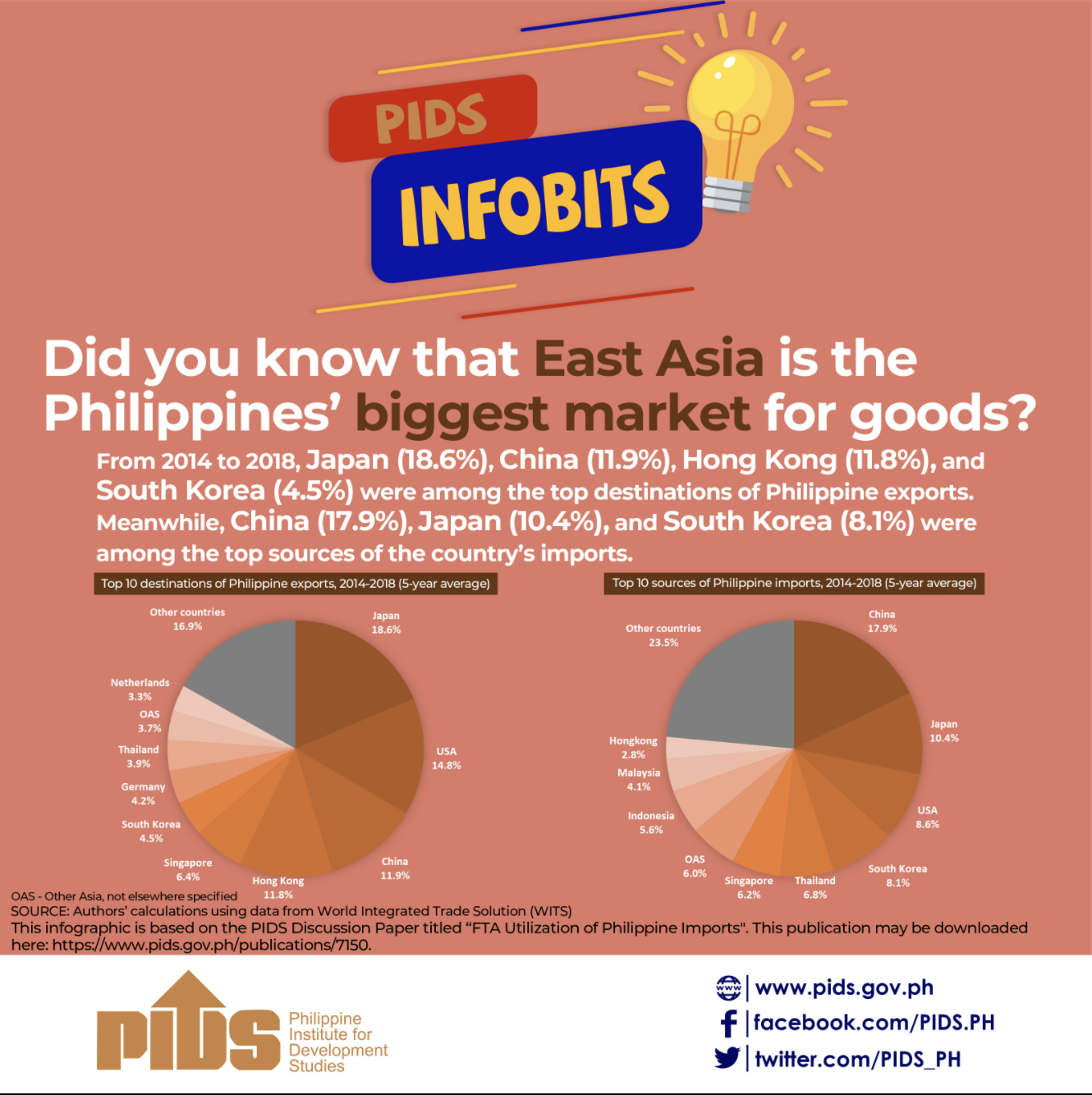MANILA, Philippines - State-run Philippine Institute of Development Studies (PIDS) is urging the government to impose a 35 percent tariff on rice imports after the expiration of the special treatment tax for the staple in 2017 along with a direct cash transfer program for farmers to promote competition while protecting the welfare of local producers.
Roehlano Briones, a senior research fellow at PIDS, said the expiration of the quantitative restriction (QR) imposed on rice imports in July 2017 would intensify competition among rice importers and foreign suppliers, resulting to lower prices but would threaten the income of local producers.
As such, the government should consider implementing a 35 percent tariff on rice imports alongside a compensatory transfer scheme for farmers over and above the existing production support provided by pertinent government agencies to enable them to transition to a more open trade environment.
Briones noted the proposal would involve significant resources as the government already has a large budget for domestic subsidies under its Food Staple Sufficiency Program but would directly address the problems faced by farmers once the protection renegotiated by the government comes to an end next year.
The 35 percent tariff rate, he noted, is already sufficient to promote competition as this is already consistent with the duty on rice imports under the ASEAN free trade regime.
“The idea is, if the tariffs are not so high then there could be increased competition in from foreign suppliers of rice, which is alarming for our farmers because this would lead to lower farmgate prices. As such we have to come up with a safety net for farmers…This would entail significant resources but is financially feasible. We also have to make sure that this is time bound, just enough to enable the farmers to make the transition to alternative crops,” he said.
The government, through the Department of Agriculture (DA), provides production support in the form of irrigation investments as well as subsidies for farm machinery, and farm inputs. Through the National Food Authority (NFA), the state procures unmilled rice from farmers at a support price.
Briones said the government should continue to continue providing these traditional support programs as these have significant medium term and long term impact but direct payments to farmers would have immediate impact as it would provide an immediate safety net for local producers.
Briones’ proposed compensatory transfer scheme for rice farmers under a post-QR regime is a decoupled payment scheme, or lump-sum cash transfers the value of which is not tied to prevailing rice prices as is the case for traditional support price and deficiency payments applied when farmgate prices and market prices fall.
The economist is proposing that decoupled compensatory cash transfers be made to rice farmers listed under the Registry System for Basic Sectors in Agriculture (RSBSA) twice a year (dry cropping season and wet cropping season) for a span of a single administration.
Briones is proposing that farm areas eligible for assistance be capped at two hectares per farmer. During the dry season, only farmers in irrigated areas are eligible to receive payments.
Using a so-called Total Welfare Impact Stimulator (TWIST), Briones said the government can afford to carry out compensatory transfers to rice farmers of as much as P19,000 per year at stable world market prices and P17,000 per year at 20 percent increase in world market prices.
Briones said even at this amount for four million hectares of total harvest area nationwide, tariff revenues should still exceed transfer payments.
He said the remaining proceeds from tariff revenues can be used to support other productivity-enhancing programs of the government.
After two years of negotiation, the World Trade Organization (WTO) general Council approved in July 2014 the Philippines’ bid for the continued imposition of high tariff on imported rice at a limited volume until June 2017. The extension of the QR entails increasing the volume of rice that can enter the country at a reduced, albeit still high tariff.//
Roehlano Briones, a senior research fellow at PIDS, said the expiration of the quantitative restriction (QR) imposed on rice imports in July 2017 would intensify competition among rice importers and foreign suppliers, resulting to lower prices but would threaten the income of local producers.
As such, the government should consider implementing a 35 percent tariff on rice imports alongside a compensatory transfer scheme for farmers over and above the existing production support provided by pertinent government agencies to enable them to transition to a more open trade environment.
Briones noted the proposal would involve significant resources as the government already has a large budget for domestic subsidies under its Food Staple Sufficiency Program but would directly address the problems faced by farmers once the protection renegotiated by the government comes to an end next year.
The 35 percent tariff rate, he noted, is already sufficient to promote competition as this is already consistent with the duty on rice imports under the ASEAN free trade regime.
“The idea is, if the tariffs are not so high then there could be increased competition in from foreign suppliers of rice, which is alarming for our farmers because this would lead to lower farmgate prices. As such we have to come up with a safety net for farmers…This would entail significant resources but is financially feasible. We also have to make sure that this is time bound, just enough to enable the farmers to make the transition to alternative crops,” he said.
The government, through the Department of Agriculture (DA), provides production support in the form of irrigation investments as well as subsidies for farm machinery, and farm inputs. Through the National Food Authority (NFA), the state procures unmilled rice from farmers at a support price.
Briones said the government should continue to continue providing these traditional support programs as these have significant medium term and long term impact but direct payments to farmers would have immediate impact as it would provide an immediate safety net for local producers.
Briones’ proposed compensatory transfer scheme for rice farmers under a post-QR regime is a decoupled payment scheme, or lump-sum cash transfers the value of which is not tied to prevailing rice prices as is the case for traditional support price and deficiency payments applied when farmgate prices and market prices fall.
The economist is proposing that decoupled compensatory cash transfers be made to rice farmers listed under the Registry System for Basic Sectors in Agriculture (RSBSA) twice a year (dry cropping season and wet cropping season) for a span of a single administration.
Briones is proposing that farm areas eligible for assistance be capped at two hectares per farmer. During the dry season, only farmers in irrigated areas are eligible to receive payments.
Using a so-called Total Welfare Impact Stimulator (TWIST), Briones said the government can afford to carry out compensatory transfers to rice farmers of as much as P19,000 per year at stable world market prices and P17,000 per year at 20 percent increase in world market prices.
Briones said even at this amount for four million hectares of total harvest area nationwide, tariff revenues should still exceed transfer payments.
He said the remaining proceeds from tariff revenues can be used to support other productivity-enhancing programs of the government.
After two years of negotiation, the World Trade Organization (WTO) general Council approved in July 2014 the Philippines’ bid for the continued imposition of high tariff on imported rice at a limited volume until June 2017. The extension of the QR entails increasing the volume of rice that can enter the country at a reduced, albeit still high tariff.//












